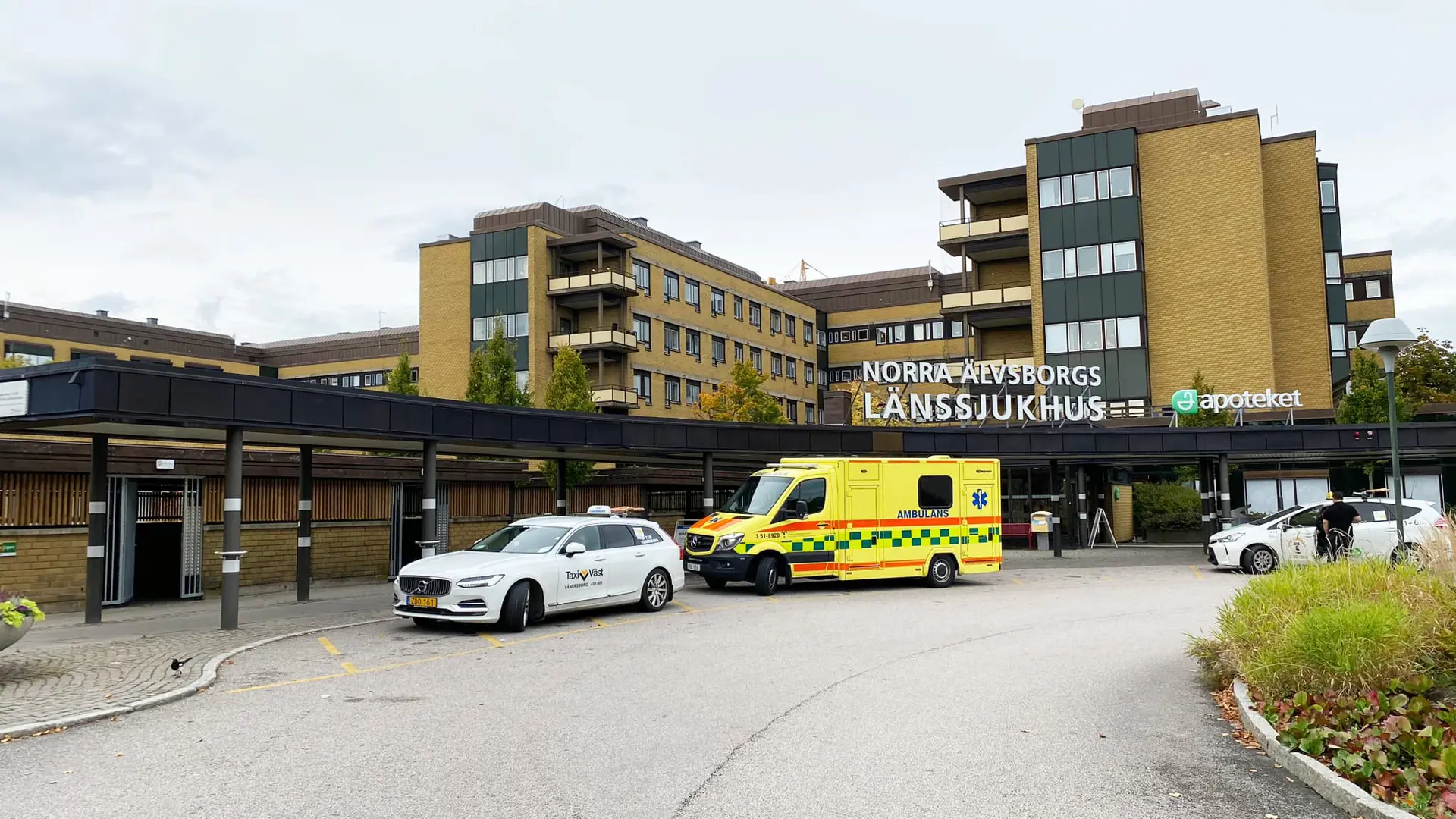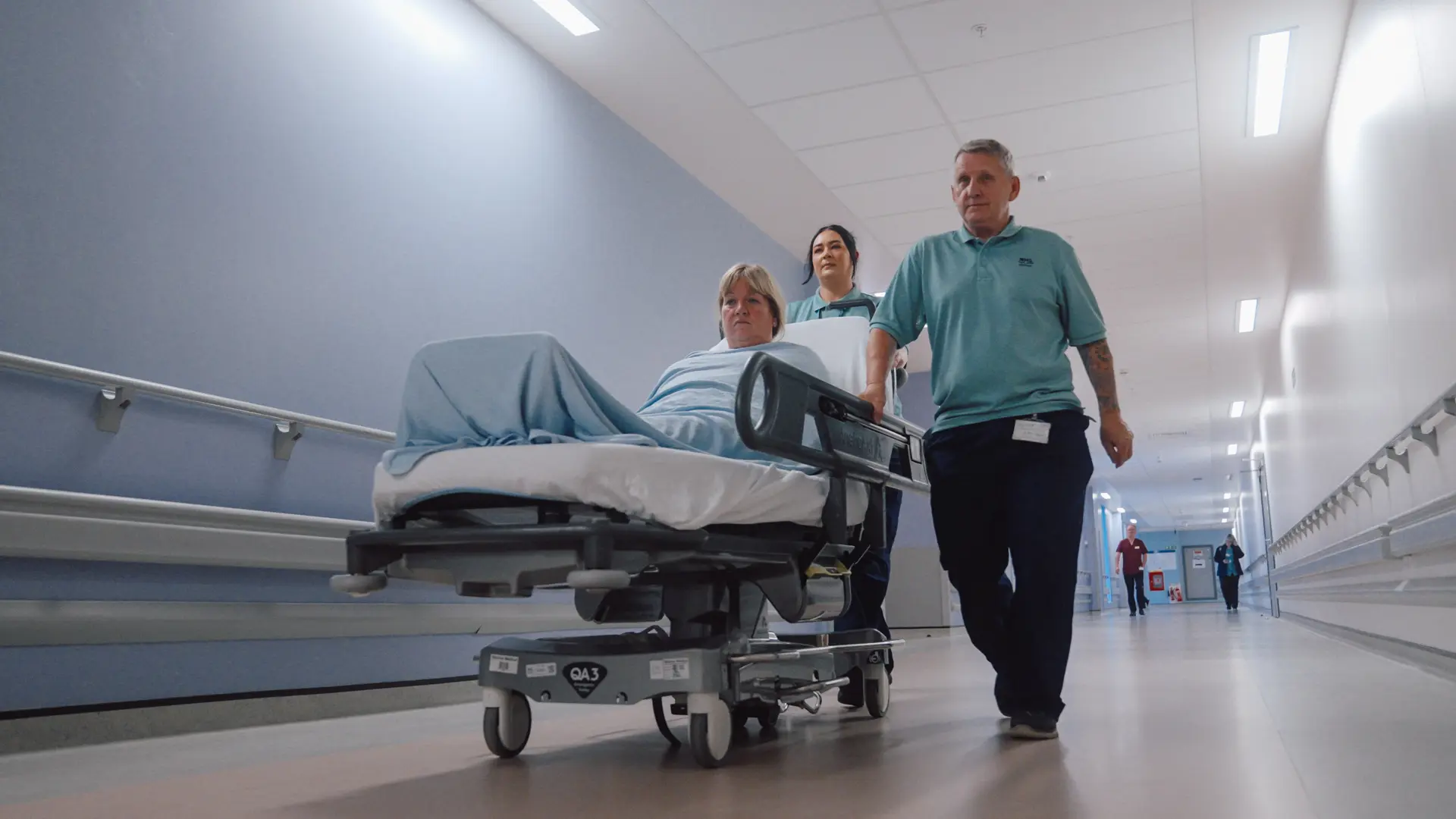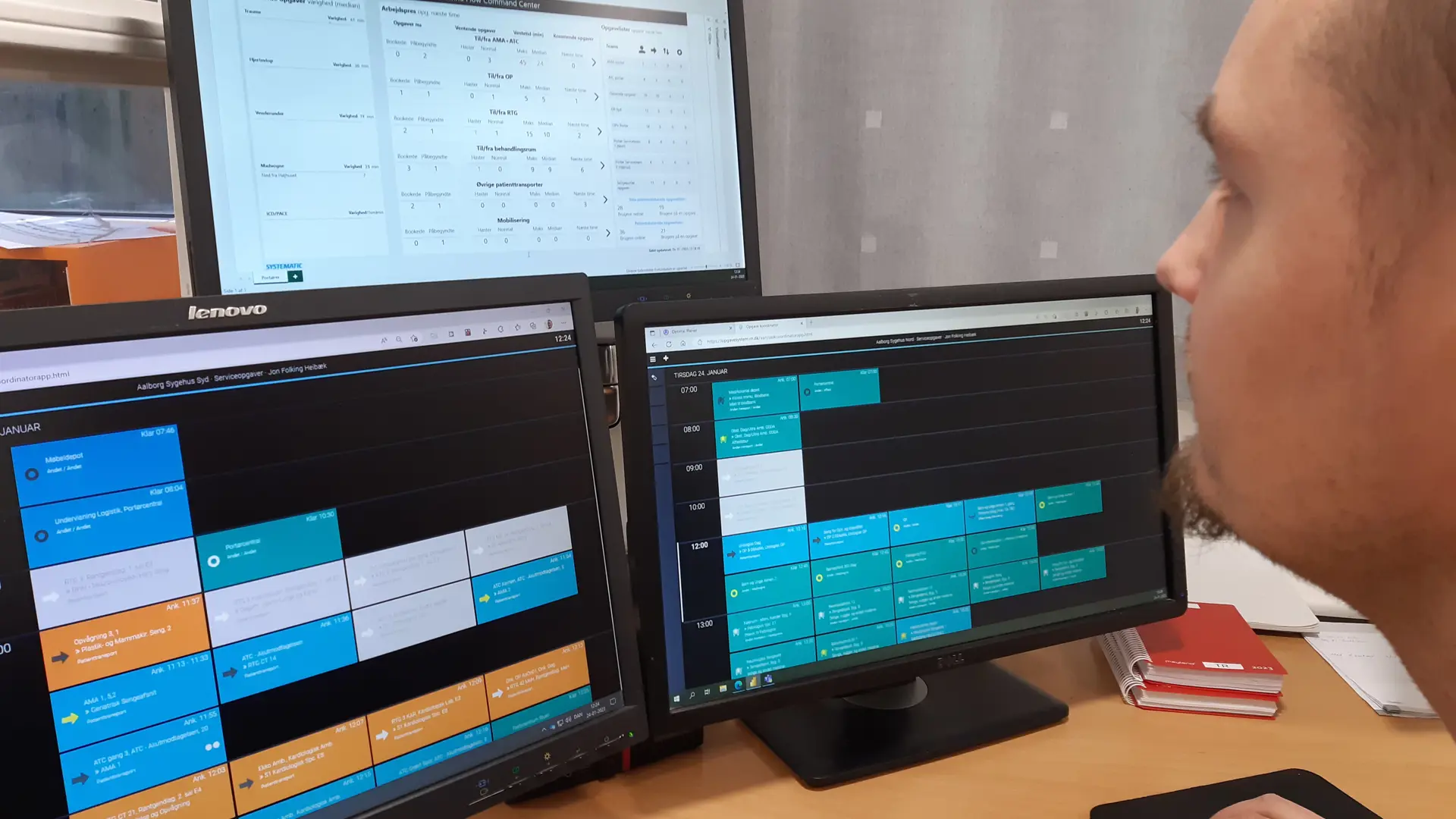Digitalised task management improves patient flow and patient experience
One of the first hospitals in the UK to use Columna Flow Task Management was Dumfries and Galloway Royal Infirmary in southern Scotland. Benefits from the system already include a more efficient patient journey, better overview, and greater staff empowerment.
De-centralisation and nurses doing the porter's job
Until the summer of 2019, Dumfries and Galloway Royal Infirmary (DGRI) had a service organisation that was characterised by the porters working in silos. Some were allocated to specific departments, while others worked throughout the hospital. Service managers found it difficult to maintain their overview of tasks and available porters. The challenge resulted in scheduled deadlines was not meet and nurses had to do the porter’s jobs instead of doing their job. The result was delayed and it had a major influence on machine utilisation and patient flows.
DGRI needed a system that provided an insight into daily operations and improved collaboration between their porters and nurses. The solution was Columna Flow Task Management, as it being able to fulfill the hospital’s needs and meet the identified challenges. Columna Flow went live in August 2019 at DGRI, and the hospital experienced significant improvements within the very first month by implementing the system.
The implementation of the new system meant that porters and nurses had to adjust to a new way of working together. Further, Columna Flow Task Management helped the service managers create an overview of the available porters and ensure that deadlines were met. Fortunately, the transition went as planned, thanks to careful preparation work between DGRI and Systematic.
X-Ray department experiences significant improvements
One department that suffered deeply from the former curation was the X-Ray Department in DGRI. The department depends on porters bringing and picking up patients at the right times to maintain their appointment schedule and avoid waiting times. However, in peak times the porters are challenged by the volume of patients, which led to nurses spending time transporting patients instead of doing their work. By implementing Columna Flow Task Management, the X-Ray department experienced great improvements in the overview and coordination of resources and tasks. Further, the department has been able to finish all scheduled patients for the day before closing time since the implementation. Something impossible before.
“We (the service organisation) were really struggling to get our patients down to the department – not because of lack of porters – just because they were at the wrong place at the wrong time. Our X-Ray Department absolutely love the system […] our service has improved immensely since implementation,” says Angela. The Task Management system enables nurses to plan ahead and register patient transports, allowing porters to prioritise their tasks to fit the needs of the departments throughout the day.
Data provides a clear overview
DGRI rapidly experienced the many benefits of the Columna Flow solution. Besides creating a bigger overview, the system provides full documentation of all service tasks, providing full insight for managers into daily tasks, and identifying peak and lower demand periods for porters. DGRI quickly experienced the benefits from data insight. The insights became evident of a new task structure and showed that there were not enough tasks to keep porters busy when working at night. Reasoned routine tasks were pushed to the night watch to maintain the porters’ efficiency. This enabled porters during the day to prioritise patient-related tasks and other ad hoc tasks.
The porters also engaged in the new insights and came up with input for changes: “…the porters asked us if we could make a few changes to things like the time we scheduled for repetitive tasks. And because we were able to do so, they felt listened-to and empowered,” explains Angela.
The implementation of the Columna Flow Task Management solution has enabled managers in DGRI to involve porters and benefit from their tactical knowledge of how the hospital works. The solution contributed to engage the porters and make the hospital's workflows more efficient.
Implementing to other "mobile services" across the hospital
DGRI is very satisfied with the Columna Flow system and the benefits experienced across the hospital. “It allows us to plan better and to see where things can be improved. Ultimately, patient flow is much improved,” concludes Angela.
The solution has brought great value to DGRI and the hospital is already exploring other service areas and functions that could benefit from using Columna Flow. One example is the phlebotomists, the clinicians responsible for taking blood samples, who visit all the different wards and patients. Angela sees considerable potential for this function to start using Columna Flow Task Management, and explains their ongoing plans: “Our Supplies Department is also looking to use it, and ultimately we would like our Cleaning Services to be on the system because that module seems to work really well too.”
DGRI is not the only hospital finding the value in Columna Flow. Aberdeen Royal Infirmary and Northern General Hospital in Borders are also currently using the Columna Flow Task Management solution, while hospitals in Glasgow and Dundee are going live with the system during Spring 2021, followed by hospitals in Edinburgh and Fife during 2021.
Latest cases
Our solutions and services make a difference to our customers. Take a look at our cases and find inspiration in the benefits others have realised.








